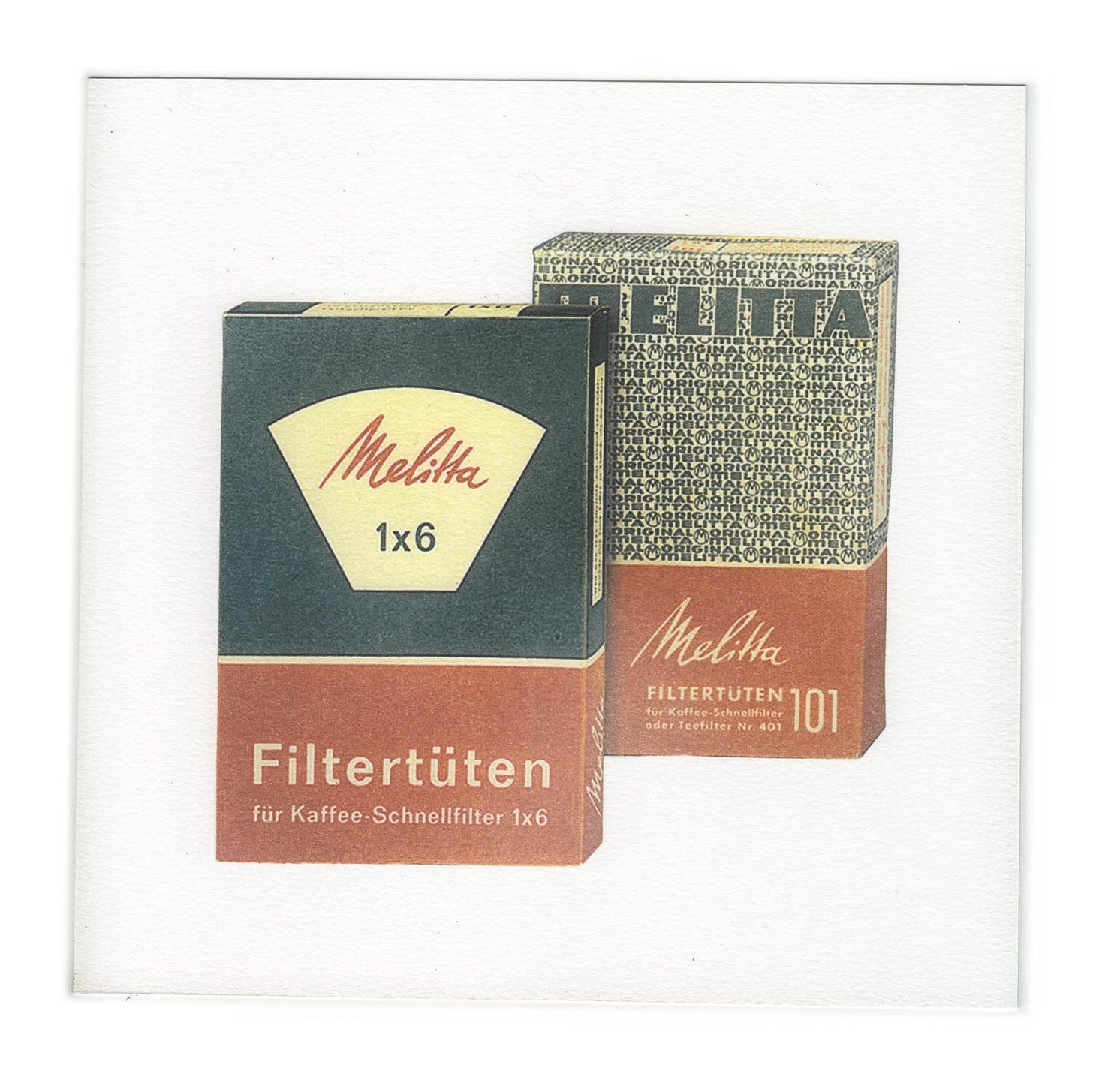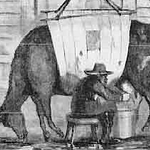What do salt cellars, automatons, and coffee filters have in common? All three are technologies that have influenced the way we serve and eat our food. Listen in to find out some facts that will have you saluting some unlikely innovators.
When was the last time that you thought about your cookwares and kitchen appliances? There are multitudes of items invented and designed to make our gastronomic lives easier, yet how much do we really know about their origins? Leigh and Kim set out to explore and uncover the secret lives of the tools that make cooking and eating easier in an informal series on Kitchen Technologies.
The COFFEE will FLOW
Leigh’s inspiration came while cleaning her Aeropress: how many ways there are to make coffee at home?
One origin of coffee legend has it that a young Ethiopian goatherd named Kaldi noticed his usually subdued goats frolicking quite happily near a bush with bright, red beans.
It wasn’t long until another unnamed monk dreamed up the idea of drying the berries and boiling them to make a hot brew. And voila! coffee culture was underway.
A quick timeline of the coffee maker looks like this:
The Turks allegedly invented the first method of brewing coffee called the Ibrik method. The pulverized grounds are boiled in water and the grounds settle to the bottom. There’s no filter so pouring slowly and carefully is important to reduce the grounds in your cup.
From there we jump forward to the 1800s when in rapid succession, the French press, the percolator, the vacuum coffee maker, and the precursor to the espresso machine were introduced.
In the 1900s, the piston coffee machine was patented, the first electric coffee maker was introduced and Mr. Coffee - the first in-home automatic drip coffee appliance - made its debut.
But one thing that could be truly categorized as a “necessity-is-the-mother-of-invention” invention was the coffee filter. This one bit of technology impacted the future development of nearly all future coffee makers, but also on how coffee beans were ground. And we all owe a debt of gratitude for the coffee filter to Frau Melitta Bentz.
She also despised the chore of having to clean the grinds out of her copper pot. So she did what any of us would do, she decided to figure out how to make that perfect cup of grit-free coffee and simplify the cleaning process.
Melitta died at the age of 77, but the company operates to this day and employs 4,000 people across the world. It is still operated by the family.
SALT of the EARTH
Food ways and means are so important to humans that museums large and small display all manner of cookery and tableware rendered in fantastic forms from interesting materials.
Kim’s memory of seeing an ornate, silver salt tower in a British museum inspired her exploration of salt cellars and their history.
Salts (with a capital-S) is what we call the assortment of vessels that hold table salts - which are different from other salts, such as brining salts, smelling salts, etc. The salt vessels are known as salt cellars, salt towers, salt-boxes, salt pigs, and our modern salt shakers.
Elaborate saltcellars found their way to dining tables during the Middle Ages (5th to 15th Century CE). Ornate master salts (sometimes decorated with sea motifs like boats or shells) were placed near the head of the table (a long standing place of honor) and a guest’s social and financial status was made clear by whether they sat above or below the master salt.
The great equalizer that was the Industrial Revolution made possible new techniques for manufacturing tableware that ultimately changed the quality (and quantity) of things on the dining table. Pressed glass manufacture circa 1825 made the production of easily-molded glass salt trenchers easy.
Salt shakers appeared sparingly on Victorian tables but suffered from the issue of salt clumping - a problem finally solved in 1911 when anti-caking agents were added to table salts. Open salt trenchers gave way in prominence to salt & pepper shaker sets.
In her own home, Kim collects salts from many different parts of the world and stores them in a variety of Salts ranging from plastic shakers (table salt) to crystal salt cellars (flaked salt).
Kitchen Technology Transcript
🎧 Click here for the full, interactive transcript of this episode 🎧
Sources We Found Helpful for this Episode
Books We Think You’ll Enjoy Reading
Uncommon Grounds: The History of Coffee and How It Transformed Our World by Mark Pendergrast
The World Atlas of Coffee: From Beans to Brewing -- Coffees Explored, Explained and Enjoyed by James Hoffmann
Salt: A World History by Mark Kurlansky
Salted: A Manifesto on the World's Most Essential Mineral by Mark Bitterman
The Salt Book: Your Guide To Salting Wisely and Well by Fritz Gubler
Recipes You Really Need to Try
Sebastian's Dark Chocolate Cremaccino - Melitta
How to Infuse Salt - The Pioneer Woman
Citrus-Fennel Flavored Salt - Food & Wine Magazine
Episodes We Think You’ll Like
The Glorious Egg: Symbolism, Tiny Dinosaurs, and Egg Espionage
Grain Empires: The Wheat Belt, American Innovation, and A Kitchen Confidante
We would love to connect with you
AsWeEat.com, on Instagram @asweeat, join our new As We Eat community on Facebook, or subscribe to the As We Eat Journal.
Do you have a great idea 💡 for a show topic, a recipe 🥘 that you want to share, or just say “hi”👋🏻? Send us an email at connect@asweeat.com
Review As We Eat on Podchaser or Apple Podcast. We would like to know what you think.
And please subscribe to As We Eat, Going Places. Eric and Leigh will be traveling in their converted van sharing stories of food culture from the road.
Want more tasty tidbits from As We Eat? For just a few dollars, you can get access to exclusive content as well as more in-depth articles and help keep our oven lights on!
Thank you for listening to the As We Eat Podcast. This post is public so share it with a friend - or three :)


























Share this post